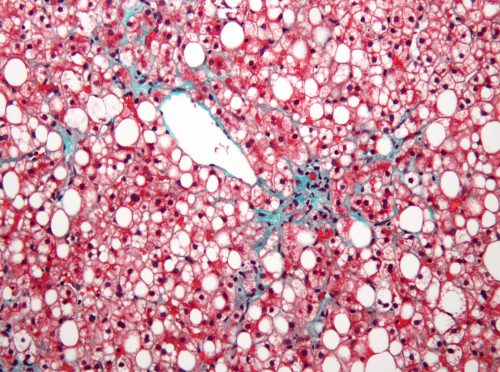Nonalcoholic fatty liver disease (NAFLD), which afflicts up to one-third of the general adult population, is swiftly becoming the most common cause of chronic liver disease. NAFLD is also associated with type 2 diabetes and cardiovascular disease. In a Yale-spearheaded study recently published in Science Translational Medicine, a novel therapy has been shown to safely and efficiently reduce liver fat and improve metabolic symptoms related to NAFLD that lead to type 2 diabetes.
Characterized by insulin resistance and major fat buildup in the liver tissue, NAFLD must be treated directly. “Specific metabolites of fat in the liver are the culprits—they block insulin action, which then leads to hyperglycemia (high blood sugar),” explained senior author and Yale Professor Gerald Shulman.
Shulman and his team sought to reduce excess liver fat by enhancing activity in the mitochondria, the primary regulator of energy metabolism in cells. Following this course of action, liver cells exhibit an increase in mitochondrial oxidation and are able to burn more fat.
Specifically, the group manipulated a drug that was widely pegged as a weight-loss cure-all in the early 1900s, but was later banned for inducing abnormally high body temperatures. The researchers’ efforts culminated in a new drug design that precisely targets mitochondria in the liver. This specificity avoids the toxic repercussions of the previous version of the drug. After testing the improved drug in two species of nonhuman primates, the scientists found that it lowered liver fat and hepatic insulin resistance without adverse effects, demonstrating its significant capability to reverse NAFLD.
“We are marching along to show that this is a safe approach to treat the two related pandemics of type 2 diabetes and NAFLD, and I am looking forward to taking this liver-targeted mitochondrial therapeutic approach to the clinic,” Shulman said.

